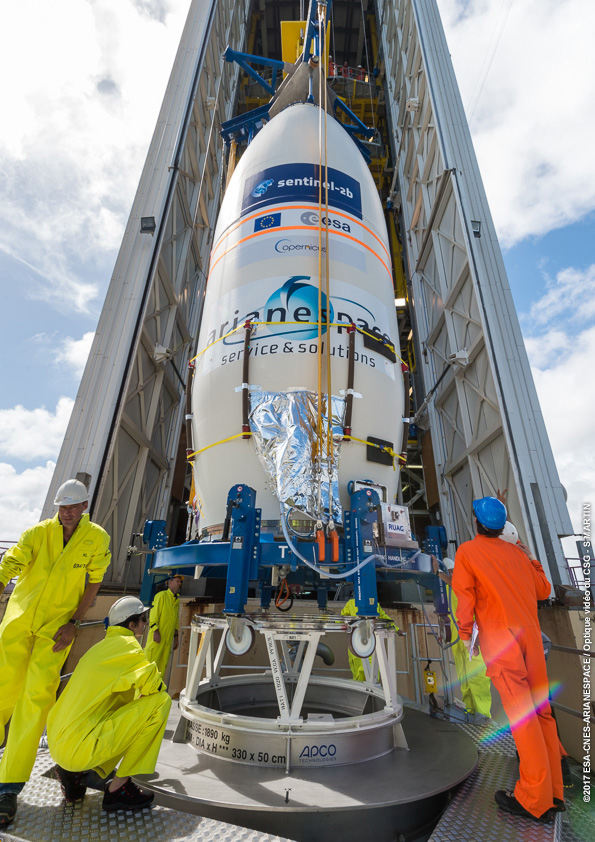For its third launch of the year Arianespace will orbit the Sentinel-2B satellite, part of Europe’s Copernicus Earth observation programme, on behalf of the European Commission under a contract with the European Space Agency (ESA). The launch is scheduled for 6th March.
The satellite was shipped to Kourou in early January, where it has been tested, fuelled, encapsulated in its Vega rocket fairing, rolled out to the launch pad and hoisted into the tower.
It will be the ninth flight by the Vega launcher since its first liftoff from the Guiana Space Center in 2012, and its sixth mission carrying an Earth observation payload.
The aim of the Copernicus programme is to give Europe continuous, independent and reliable access to Earth observation data. It covers a broad spectrum of missions that will enable this continent to better control and protect the environment, enhance understanding of the underlying phenomena in climate change, as well as improve security for European citizens.
Sentinel-2B is the fourth satellite in the Copernicus program to be orbited by Arianespace, following the successful launches of Sentinel-1A by a Soyuz rocket in April 2014, Sentinel-2A by a Vega rocket in June 2015, and Sentinel-1B by a Soyuz in April 2016 – all performed from the Guiana Space Centre.
The Sentinel-2B Earth observation satellite primarily focuses on monitoring land masses and coastal zones around the world. Its data will be used for applications concerning the monitoring of vegetation, soil types and habitats. The spacecraft features a multispectral, wide-swath, high-resolution optical imaging instrument.
It will be positioned in an orbit opposite that of Sentinel-2A to ensure optimum coverage and data delivery. The pair of Sentinel-2 satellites will cover the Earth’s entire surface in five days. Sentinel-2B was designed and built by a consortium of 60 companies led by Airbus Defence and Space.

